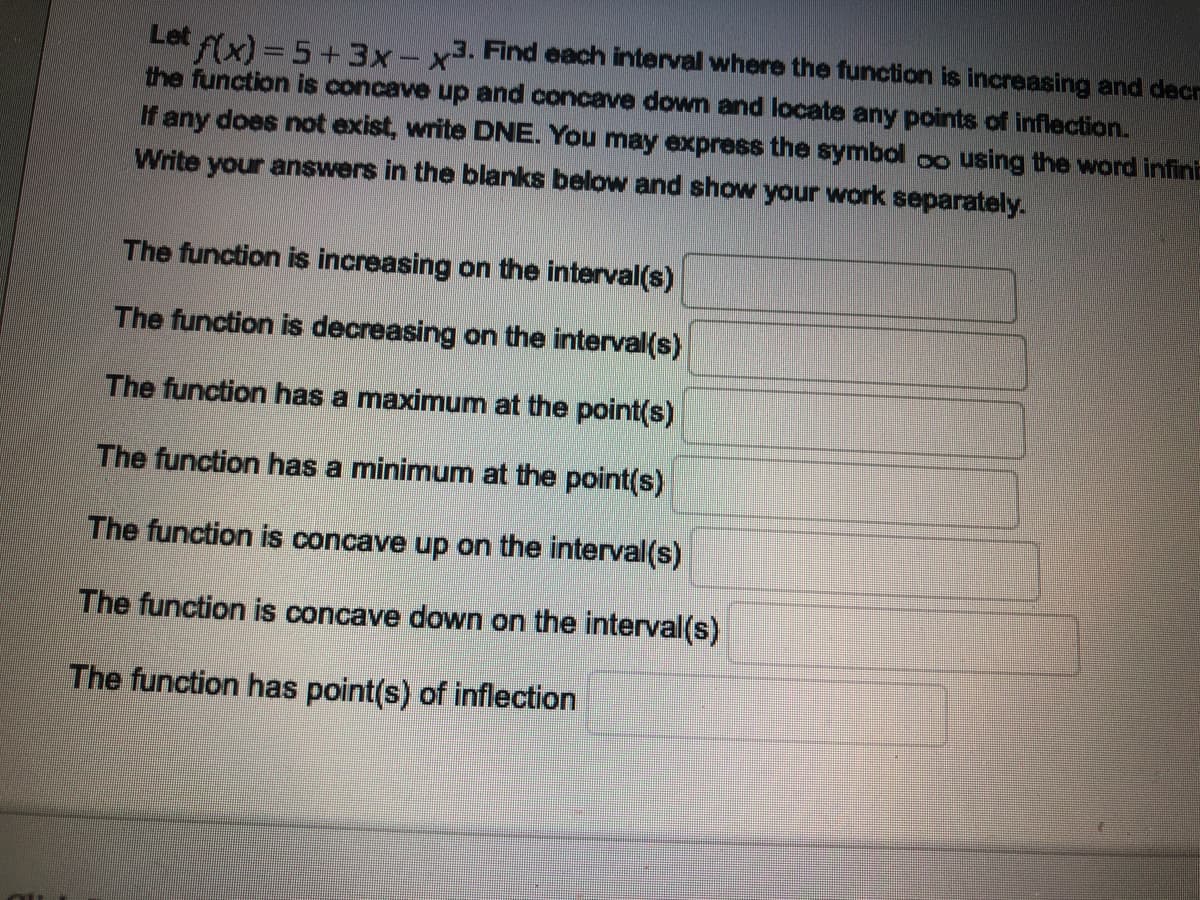Let Ax)=5+3x-x3. Find each interval where the function is increasing and decr the function is concave up and concave down and locate any points of inflection. If any does not exist, write DNE. You may express the symbol o using the word infini Write your answers in the blanks below and show your work separately. The function is increasing on the interval(s) The function is decreasing on the interval(s) The function has a maximum at the point(s) The function has a minimum at the point(s) The function is concave up on the interval(s) The function is concave down on the interval(s) he function has point(s) of inflection
Let Ax)=5+3x-x3. Find each interval where the function is increasing and decr the function is concave up and concave down and locate any points of inflection. If any does not exist, write DNE. You may express the symbol o using the word infini Write your answers in the blanks below and show your work separately. The function is increasing on the interval(s) The function is decreasing on the interval(s) The function has a maximum at the point(s) The function has a minimum at the point(s) The function is concave up on the interval(s) The function is concave down on the interval(s) he function has point(s) of inflection
Chapter3: Functions
Section3.6: Absolute Value Functions
Problem 38SE: Cities A and B are on the same east-west line. Assume that city A is located at the origin. If the...
Related questions
Question

Transcribed Image Text:Let Ax)=5+3x-x3. Find each interval where the function is increasing and decr
the function is concave up and concave down and locate any points of inflection.
If any does not exist, write DNE. You may express the symbol oo using the word infinit
Write your answers in the blanks below and show your work separately.
The function is increasing on the interval(s)
The function is decreasing on the interval(s)
The function has a maximum at the point(s)
The function has a minimum at the point(s)
The function is concave up on the interval(s)
The function is concave down on the interval(s)
The function has point(s) of iflection
Expert Solution
This question has been solved!
Explore an expertly crafted, step-by-step solution for a thorough understanding of key concepts.
Step by step
Solved in 5 steps

Recommended textbooks for you


Algebra & Trigonometry with Analytic Geometry
Algebra
ISBN:
9781133382119
Author:
Swokowski
Publisher:
Cengage


Algebra & Trigonometry with Analytic Geometry
Algebra
ISBN:
9781133382119
Author:
Swokowski
Publisher:
Cengage